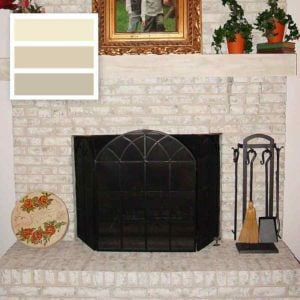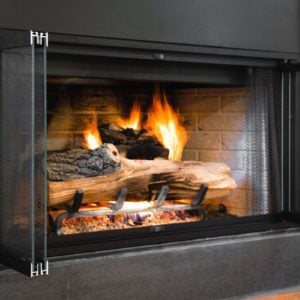Choosing The Right Fireplace To Match Your Home Decor
Everyone loves a fireplace. Not only do they warm you up during the colder months, but they are great to look at. They become a central...


 Replacement Glass Doors
Replacement Glass Doors
 The EZ Fireplace Door
The EZ Fireplace Door
 Fireplace Door Glass Cleaner
Fireplace Door Glass Cleaner
Now that it is finally starting to get chilly in some locales and the holidays are upon us, it’s time to think about stocking up on some firewood for the colder months ahead.
As simple as it may seem, there are some tips that will come in handy when you are picking out, stacking and storing wood for use throughout the winter.
With this post we are assuming that you have decided to purchase your firewood, and bring it home to store it and use it at a later time. We’ll save the “lumberjack” tips for another post!
Before we get too far into the stacking and storage tips, a couple of things to keep in mind when purchasing your firewood supply. Most people purchase any significant quantity of firewood by the cord. You’ll find when purchasing by the cord that you’ll get a pile of wood that is about 8 feet long, and 4 feet tall and deep. You can also by smaller cords of wood called “face cords,” which is about a third of a full cord of wood. Once you get your firewood chopped and ready to stack next to your fireplace, you might want to make sure you have a wood holder or place to store it close to the fire, where it is most convenient for you to access.
Splitting firewood
If you’ve purchased and brought home any quantity of firewood before, then you know sometimes you do have to do a little prep work, splitting, and chopping it a bit before you can stack firewood and store it for use later.
The first step is to give yourself a lot of room and exercise caution! Take your time, and make sure you have enough space to safely wield an axe before you begin.
Choose an outdoor space that’s away from people, make sure you have a nice flat chopping block to chop the wood on, and also make sure the ground is nice and flat underneath your feet to ensure you don’t lose your footing. Also, make sure the chopping block itself is no taller than your knees. Then you can get to work, but always, safety first!
Always remember to keep both hands firmly on the axe when splitting wood, and be sure to keep your arms straight when swinging the axe to chop wood. It’s the safest way to cut the wood.
Measuring firewood
Before you get started, you need to take a few moments and measure the wood, which means cutting them to the desired length for splitting. These pieces of wood are referred to as “rounds.” With the weather getting cooler, you’ll find that the wood will be easier to cut, and you will get cleaner cuts in the lower temperatures.
Stacking and storing wood
It’s important to ensure that the wood has good air flow as you stack the wood. Doing so will help prevent the wood from rotting. Another good tip is to place some treated pieces of two-by-fours to help prevent moisture from seeping in through the bottom of the wood stack. Shipping pallets can be used for a lot of different projects, but they are typically not treated, so stacking wood on top of them will leave the wood susceptible to rotting.
Also important to keep in mind when stacking your wood, be sure to create a wood stack or pile that is as stable as possible. Wood can shrink over time, so if the pieces aren’t sitting on a stable base, then they can shift and move when you least expect it. With a large enough stack that isn’t stable, and you are running the risk of an injury.
There are a couple of commonly used stacks for firewood. The simplest is called a “simple stack!” A simple stack is just rows of wood pieces with a vertical stop placed at either end of the stack. The “stop” can be made of a two-by-four, or just a simple column of wood arranged at a perpendicular angle to the wood stack.
Some people prefer organizing their firewood in what is called a “round stack.” This structure is created by assembling vertical rows of into a circle, with the ends of the wood pieces, all connecting in the center of the circle and forming a starburst. This pattern lends itself to longer drying times for the wood, so take that into consideration if you want to burn the firewood sooner.
That’s it! While most of us purchase our firewood and don’t need to worry about chopping much if any of it, it’s always going to be important to keep safety at the forefront when chopping wood or using an axe.
No account yet?
Create an Account